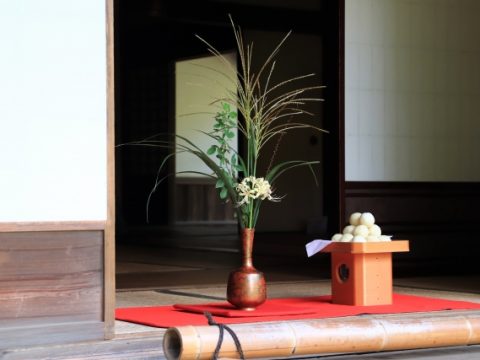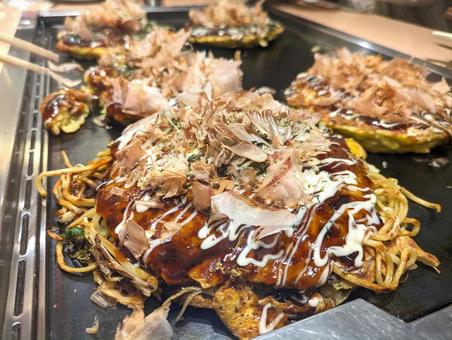Japanese stocks “Dashi”
JAPANESE FOODS
18.01.2022
Ramen, Miso soup, Udon, Nabe…Those popular Japanese foods have one thing in common. The flavors cannot be created without Dashi.
Dashi is Japanese broth made by simmering ingredients which are high in amino acids known as “Umami” in water. It is also called Dashi-jiru or Ni-dashi. Katsuobushi (Dried shaved bonito), Kombu (Dried kelp) and Niboshi (Dried small sardines) are the most commonly used ingredients to make Dashi. Shiitake mushrooms and other vegetables can be used for dashi as well.
There are 4 different types of dashi commonly used in home cooking. Each type of Dashi creates savory umami flavors and is used to cook different kinds of dishes.
Katsuo Dashi (かつおだし)
This is the easiest and most versatile Dashi used for home cooking. Katsuo Dashi is made with Katsuobushi(かつお節)and water. Cooking directions vary depending on how Katsuobushi is shaved but it is always really simple. If you have never made Dashi before, Katsuo Dashi is the first dashi you should try! It is commonly used for Miso soup, Nimono (simmered meat and vegetables in seasonings), Noodle bowl base, Noodle dipping sauce, and many different kind of Nabe-mono (Japanese Hot Pot)…etc.
Kombu Dashi (昆布だし)
(Dried Kelp)There are few methods to make Kombu Dashi and many varieties of kombu available for making Dashi. There are 4 major varieties of Kombu commonly known and all of them are harvested in Hokkaido (Northern Japan). Surprisingly, they all taste different. Making dashi out of each variety and doing a taste test might be a fun idea. Kombu Dashi is commonly used for Nabe-mono, and Nimono.
Awase Dashi(合わせだし)
Awase Dashi is made with combinations of Katsuo and Kombu. The flavor is more complex but absolutely amazing! It is commonly used for clear broth soup, Nimono, Miso soup, noodle dipping sauce and Nabe.
Iriko Dashi (いりこだし)
Iriko Dashi is made with Niboshi. Some people put the dried fish directly into water, but I learned to roast on a pan before adding water. The process will eliminate the strong fishy smell.
I love using this dashi for miso soup. It can also be used as a ramen soup base.
If you are too intimidated or too busy making dashi, but would like to cook japanese food, Don’t worry! Just like other types of broths in the world, there are granulated dashi bases available in any japanese grocery stores.

Eri Palmer
Eri grew up in Japan. She came to U.S. as an international student, and decided to stay in the country. Cooking is one of her passions, and she loves to cook Japanese food for her children.
Read previous articles by the writer
Read latest articles
KEYWORDS
- # PICKPICK
- # Resume
- # alcohol
- # Rice
- # Soup
- # winter food
- # Fast Food
- # seafood
- # spicy foods
- # raw food
- # fermented food
- # Transportation
- # MEAT
- # Edo culture
- # suits
- # clothing
- # drink
- # fish
- # seasoning
- # Japanese New Years Foods
- # Toshikoshi soba
- # Osechi Ryori
- # Ozoni
- # Christmas
- # Japanese fusion pasta
- # Wafu Pasta
- # Japanese Hot Pot
- # なべ
- # 鍋
- # Miyazaki
- # Chicken Nanban
- # Karamen
- # Autumn Wagashi
- # Mushi-yokan
- # Imo-yokan
- # Japanese Autumn Fruits
- # Autumn
- # Vending Machine
- # fall
- # dango
- # Chestnut rice
- # saury
- # Mushroom
- # Rice vinegar
- # Japanese condiments
- # 調味料
- # Sake
- # Mirin
- # Soy sauce
- # Japanese Noodles
- # Udon
- # Ramen
- # Yakisoba
- # Soba
- # Japanese Seaweed
- # 海藻
- # かいそう
- # Payslip
- # Training
- # Japanese summer foods
- # 和菓子
- # Wagashi
- # ryokucha
- # 夏
- # 飲み物
- # Ramune
- # ラムネ
- # Pokari Sweat
- # ポカリスエット
- # Calpis
- # カルピス
- # Mugicha
- # ume
- # 梅
- # うめ
- # umeshu
- # job hunting
- # tofu
- # Recruitment in Japan
- # miso
- # Japanese cuisine
- # Yellowtail and bonito
- # Children’s Day
- # Kashiwa Mochi
- # Chimaki
- # fruits
- # Kusamochi
- # Types of Agriculture in Japan
- # bread
- # パン
- # パン屋さん
- # japanese bread
- # shokupan
- # meal blead
- # anko bread
- # 桜
- # さくら
- # cherry blossom
- # visa
- # hanami
- # omotenashi
- # sakura
- # おもてなし
- # Japanese hospitality
- # oshibori
- # wet hand towel
- # hand towel
- # restaurant
- # Commuting in Japan
- # Women-only cars
- # Exit gate
- # japanese train
- # train
- # valentine
- # Japanese sweets
- # 朝食
- # Japanese Breakfast
- # Breakfast
- # Japanese
- # 日本
- # healthy
- # persimmons
- # hoshigaki
- # HR
- # work in Japan
- # jinji ido
- # corporate systems
- # Japanese work culture
- # bento
- # ekiben
- # shinkansen
- # omiyage
- # train station
- # Japanese culture
- # work culture
- # mentaiko
- # umeboshi
- # Japanese snacks
- # potato chips
- # Japanese potato chips
- # Japanese writing
- # seaweed
- # konbu
- # ocean foods
- # shio konbu
- # dashi
- # miso soup
- # food processing
- # pear
- # nashi
- # sweet potato
- # japanese sweet potato
- # stingray
- # satsuma imo
- # food value chain
- # homecooking
- # agriculture
- # Japanese homecooking
- # farming
- # nikujaga
- # shojin ryori
- # meat and potatoes
- # traditional foods
- # comfort food
- # buddhist food
- # manufacturing
- # factory
- # eihire
- # vegetarian
- # food and beverage
- # izakaya
- # yatai
- # japanese festival
- # taiyaki
- # matsuri
- # summer
- # Ikayaki
- # smart agriculture
- # shaved ice
- # kakigori
- # かき氷
- # summer dessert
- # Japan
- # Japanese foods
- # dessert
- # fruit
- # matcha
- # icecream
- # Pikcup
- # Pikc up
- # Pcikup
- # skilled labor visa
- # working visa japan
- # Dineer Table in Japan
- # Japanese manner
- # Japanese food
- # Japanese Table Manner
- # Chopsticks
- # Japanese traffic signs
- # traffic information
- # road rules in Japan
- # chocolate
- # green tea
- # Osaka
- # Work Japan
- # Japanese company
- # ikura
- # sushi
- # nigiri
- # wasabi
- # PCIK
- # PICK UP
- # PICK
- # PICKUP








